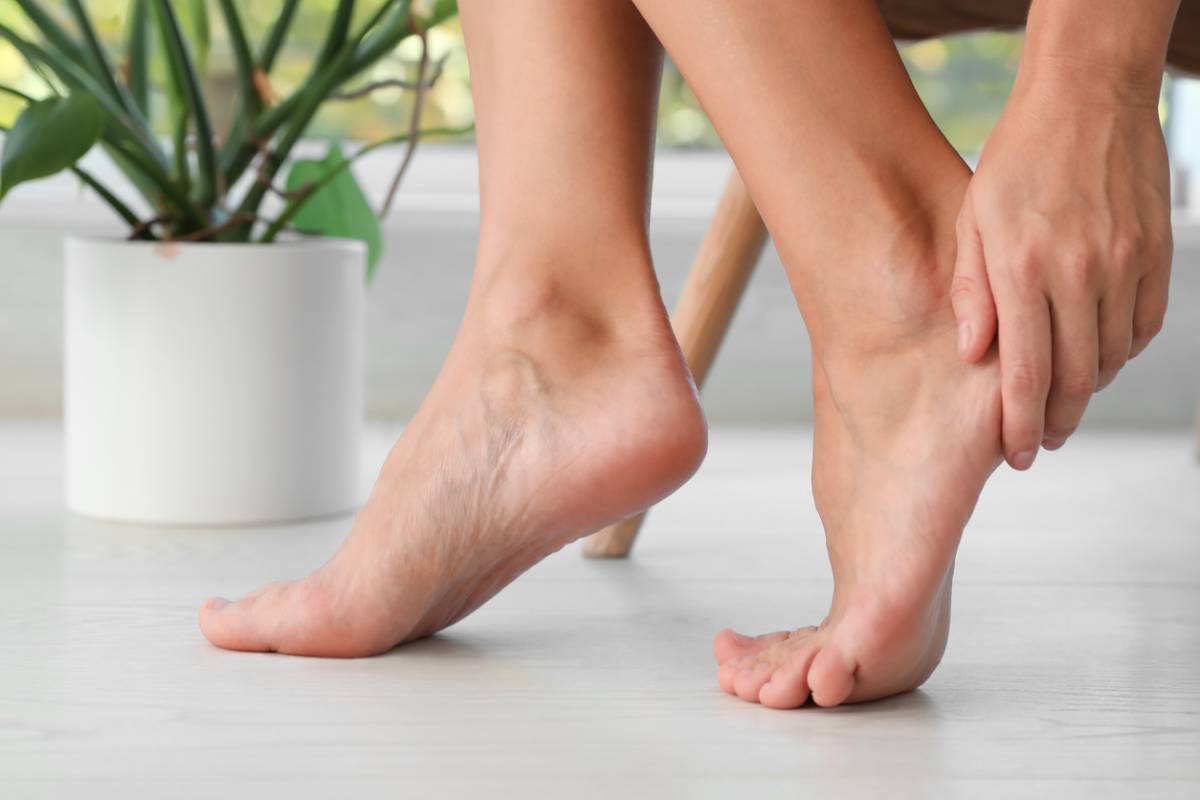The foot’s structure is designed to support your weight, help you move, and absorb impact. While we often focus on bones, joints, and muscles, the importance of fat pads in the foot should not be forgotten. The fat pad acts as a cushion, absorbing shock, distributing weight evenly, and protecting sensitive parts of the foot. Below you will find more information on how the fat pad plays a vital role in keeping you comfortable, stable, and protected.
Importance of Fat Pads in the Foot
The fat pads are a crucial part of your foot anatomy. They serve as natural shock absorbers, protecting your bones, joints, and soft tissues from excessive pressure and impact when you stand or move. The fat pads also help distribute body weight evenly across your foot. This is helpful in reducing pressure points and preventing discomfort or pain. Fat pads aid in maintaining proper alignment and stability, which contributes to overall foot function and balance. Additionally, fat pads act as insulation for your feet as they help regulate temperature and protect the sensitive structures of your foot from excessive heat or cold. Due to the importance of your fat pads, it’s necessary to preserve their integrity for your long-term foot health.
Fat Pad Thinning Risk Factors
When your fat pads become flat, it is often referred to as fat pad thinning or atrophy. This occurs when the natural cushion and thickness of your fat pad diminishes. This can lead to pain, discomfort, and a number of other unwanted symptoms. Below you will find the common risk factors associated with fat pad thinning.
Aging:
The natural aging process can impact the integrity of your fat pads. As you age, the fat pads in your feet naturally become thinner. This ultimately reduces their cushioning capabilities which can lead to a number of unwanted symptoms.
Genetics:
While you cannot control your genetics, it can have an impact on your foot health. Some individuals have a genetic predisposition to thinner or less resilient foot fat pads, which can impact your foot health over time. This can lead to a number of symptoms, so it’s important to work with a podiatrist in LA on preventative measures.
Obesity:
Obesity can lead to a number of unwanted health issues, including fat pad thinning. This is because excess body weight puts additional pressure on the fat pads in your feet. This can potentially lead to compression and thinning over time.
Repetitive Movements:
Certain repetitive physical activities can have a serious impact on your fat pads. Engaging in high-impact physical activities, such as running or jumping, can accelerate fat pad breakdown. Proper footwear or gradual conditioning is necessary, but it can still impact your fat pads long term.
Unsupportive Footwear:
The shoes you wear have a serious impact on your foot health. Wearing shoes that lack adequate cushioning or support can contribute to fat pad compression. Work with a skilled podiatrist to find the best footwear to support your feet.
Prolonged Standing:
Regularly standing or walking on hard surfaces for extended periods can place excessive stress on the fat pads. Over time, this will lead to advanced wear and tear, which can lead to thinning.
Fat Pad Augmentation
Fat pad thinning is often associated with symptoms such as pain, tenderness, sensitivity, calluses or corns, discomfort on hard surfaces, and reduced shock absorption. If you experience any of these symptoms, it’s important to contact a podiatrist right away. There are a number of treatment options, including fat pad augmentation and lifestyle changes. A skilled podiatrist can assess your foot health and create a customized treatment plan based on your unique needs. Contact the team at Jamfeet today to schedule an appointment!


